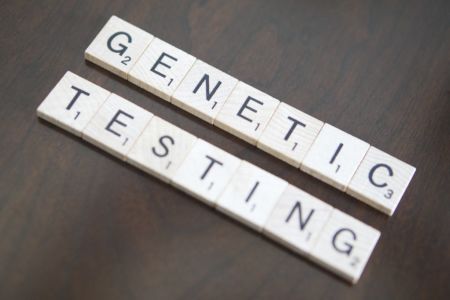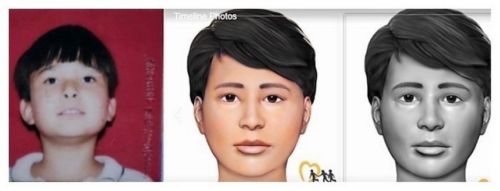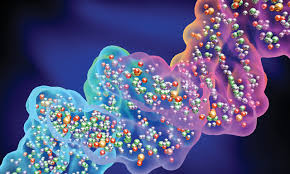If You Share Your DNA, Should You Expect Privacy?
Imagine a day when hardly anyone is able to get away with murder. Think about that. If there were a way to almost guarantee a killer would be discovered and punished wouldn’t the murder rate go into freefall decline?
Frivolous thinking, you say? Well, consider the forensic crime fighting advances that have been developed in recent years.
Homicides considered to be unsolvable are now being solved. Years-old cold cases are becoming red hot again. Advances in DNA science allow creative genealogists to use DNA in all sorts of amazing ways to identify both the nameless dead and long-sought violent crime suspects. Guilty parties are being identified, spontaneous confessions have occurred and survivors are finally getting answers.

A Big Crime Fighting Breakthrough – Photo courtesy: Mayberry Health and Home
DNA technology was first used as a powerful crime fighting tool in 1986. That year Englishman Colin Pitchfork was convicted after forensics testing matched his DNA to semen found at the scenes of two fatal rapes in the English mid-country. In 1988, the first DNA conviction was won here in the United States when Floridian, Tommie Lee Andrews, was convicted of raping and stabbing a woman.
In the beginning, it took a relatively substantial sample of blood, semen, saliva or other bodily material to identify a suspect. But science began to require smaller and smaller samples. In recent years, so-called Touch or Trace DNA was developed and identification can now be made from as few as a half-dozen skin cells left behind by a perpetrator after he or she has touched an object at a crime scene.
The most mindboggling DNA related cases these days have come with the partnership of forensic scientists and genetic genealogists. Once DNA has been gathered, either from a crime scene, a living person or an anonymous body, genealogists can build a virtual family tree of the donor’s relatives. Suspects can then be culled from that family tree and genealogists can even provide physical details of what they will look like.

His Name Was Bobby – courtesy N.C. Sheriff’s Office
In the so-called “Boy Under the Billboard” case a ten-year- old boy’s body was found discarded along a North Carolina highway in 1998. Thanks to a determined sheriff’s detective and an enterprising genealogist’s DNA breakthrough the child was finally identified last year as Bobby Whitt. His father has now been charged with Bobby’s murder and is also suspected in the murder of the boy’s mother.
A DNA family tree discovery finally ended the 30-year-long spate of killings by the BTK Strangler in Wichita, Kansas. After detectives zeroed in on Denis Rader as the killer they learned his daughter had recently undergone a gynecological test at a local clinic. They got a court order for her DNA. It was a familial match to the DNA collected from BTK’s crime scenes and when confronted Rader simply said, “I’m BTK. You got me.”
After a massive four-decade long police investigation a suspect in the so-called Golden State Killer was finally identified through the painstaking task of uploading the unknown killer’s DNA to publicly available genealogy websites. Great-great-great grandparents of the killer donor were identified, then 10 to 20 distant relatives with a partial DNA match were located and finally detectives and genealogy experts narrowed it down to just one suspect. Joseph DeAngelo, 72, a former disgraced police officer was arrested. He’s now awaiting trial accused of at least 50 rapes and 12 murders committed up and down the California coast.

DNA Contains a Multitude of Crime Fighting Clues
In addition to the millions of DNA samples stored in federal and state data bases, more than 20 million more samples have been deposited by those looking for relatives on private DNA registries like Ancestry.com and a clearing house registry called GEDMatch.** These online sites have been a boon to detectives who are looking to match unidentified crime scene DNA with someone on the criminal’s family tree.
This breakthrough in DNA sleuthing has successfully id’d more than 70 criminal suspects over the last 18 months, yet it has critics. Some genealogists sharply criticize their colleagues who work with law enforcement as going outside the profession’s boundaries. Some customers of the ancestry sites are angry that their genetic sample was used to arrest family members. Operators of the sites are miffed that their data bases are now swimming with unknown profiles uploaded by detectives. Some registries now ask customers to give their explicit permission before law enforcement can include their DNA profile in a search.
Privacy advocates warn that the family tree procedure amounts to Big Brother “genetic surveillance. In response, new federal rules for familial DNA searches are now being developed, funded by Dept. of Justice grants.
It still puzzles me though that anyone would want to stymie an investigator searching for a serial rapist or murderer. No one should get away with such crimes.
Coupling DNA advances with DNA genealogy has been called the biggest crime fighting breakthrough in recent history. To restrict this innovation and risk leaving violent criminals on the loose is madness.

###
** CORRECTION: An earlier version of this column included the website 23andMe as one which shared information with law enforcement. That was incorrect. Please see a company comment below for further explaination. I regret the error. ~DD
Reader Mike Daly writes:
MS. Diane Diamond,
RE: It’s time U.S. stops rolling that drug-fight rock uphill
I certainly agree with your premise that we need to change tactics. Your point with Sisyphus is right on. Taking James Madison’s admonition “experience is the oracle of truth” as a guide, I suggest you read Last Call, by Daniel Okrent. In it he describes the decades before Prohibition and all the great reasons why we needed it. Then in succinct but cogent detail he describes the complete disaster that was produced by Prohibition. Then, as now, demand drove the trade and no amount of police or interdiction was enough. Finally he describes its demise. He says during Prohibition since there were no rules everyone drank. But with its demise, liquor regulations did a good job of stopping the drinking among youth and that drinking by women was drastically reduced. So much so that there was not as much alcohol consumed in the U.S. until the 1970’s.
That book seems a good guide. We need to sell the drugs ourselves getting rid of the drug trade and treat the addicts that are willing to be treated. Neuroscientist Judith Grisel, a former drug addict herself writes in Never Enough that it is a disease of some sort. Treat them, don’t arrest them.
Finally for an eye-opener as to why the Nixon Administration started the drug war,
Read Legalize It All, by Dan Baum.
[Harper’s Magazine https://harpers.org/archive/2016/04/legalize-it-all/%5D
An excerpt:
At the time, I was writing a book about the politics of drug prohibition. I started to ask Ehrlichman a series of earnest, wonky questions that he impatiently waved away. “You want to know what this was really all about?” he asked with the bluntness of a man who, after public disgrace and a stretch in federal prison, had little left to protect. “The Nixon campaign in 1968, and the Nixon White House after that, had two enemies: the antiwar left and black people. You understand what I’m saying? We knew we couldn’t make it illegal to be either against the war or black, but by getting the public to associate the hippies with marijuana and blacks with heroin, and then criminalizing both heavily, we could disrupt those communities. We could arrest their leaders, raid their homes, break up their meetings, and vilify them night after night on the evening news. Did we know we were lying about the drugs? Of course we did.”
Pretty scary haw American politics works isn’t it!
Keep writing. We love to read you.
Mike
Michael Daly
READERS: PLEASE NOTE THIS CORRECTION. I apologize for the error.
Hi Diane,
We at 23andMe saw your recent article for Muskogee Phoenix. We wanted to send some information that may be useful for you to correct the line:
“…private DNA registries like Ancestry.com, 23andMe and a clearinghouse registry called GEDmatch. These online sites have been a boon to detectives who are looking to match unidentified crime scene DNA with someone on the criminal’s family tree.”
In fact, 23andMe has never given customer information to law enforcement officials. We do not share customer data with any public databases, or with entities that may increase the risk of law enforcement access. We publish information on law enforcement inquiries in our transparency report, which is updated regularly available online:
https://www.23andme.com/transparency-report/
We ask that you please revise your story to make this clear, and de-couple the 23andMe mention from GEDmatch and Ancestry, both of whom have given information to law enforcement.
—
Aushawna Collins
Communications Coordinator
23andMe | 223 N. Mathilda Ave, Sunnyvale, CA 94086